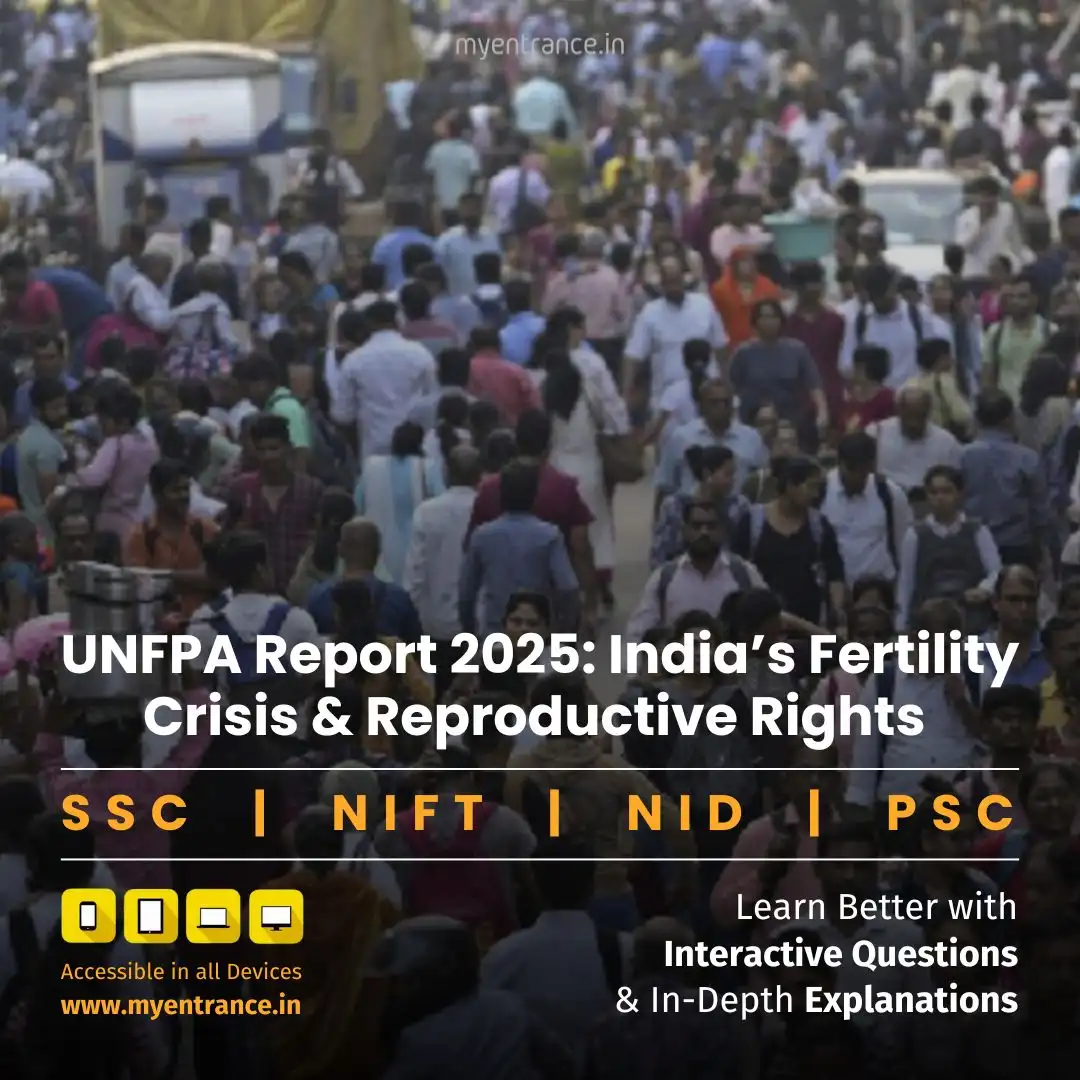Select Language
UNFPA Report 2025: India’s Fertility Crisis & Reproductive Rights
India’s fertility rate has plummeted to 2.0 (replacement level), yet millions struggle with unmet reproductive aspirations. The UNFPA 2025 Report exposes how demographic anxiety threatens women’s autonomy nationwide.
1. Fertility Trends: Beyond the Numbers
National Decline: Fell from 2.9 (2005) to 2.0 (2020), but states like Bihar (3.0) and UP (2.7) lag, while Delhi/Kerala (1.5) face underpopulation risks.
Global Shift: 50% of countries now have fertility rates <2.1; India mirrors this with urban-rural divides.
Core Crisis: 36% of Indian women report unintended pregnancies, while 30% experience underachieved fertility (fewer children than desired).
2. Policy & Societal Barriers
Workplace Failures:
Maternity Benefit Act (26 weeks leave) exists, but paid paternity leave is just 15 days.
Only 1% of Indian firms offer childcare facilities (World Bank).
Social Pressures:
73% of infertile women face stigma (ICMR).
NFHS-5 shows 4% married women lack access to spacing contraceptives.
Gender Imbalance: Women shoulder 90% of domestic work, discouraging childbearing among educated professionals.
3. Government Interventions: Gaps & Solutions
Existing Schemes:
₹6,000 for institutional deliveries (PMMVY).
Free IVF treatment in Tamil Nadu/AP but only for BPL families.
Urgent Reforms Needed:
Universal paid parental leave (not just maternity).
Subsidized childcare hubs near industrial clusters.
Nationwide infertility coverage under Ayushman Bharat.
5 Key Takeaways
India’s Fertility Duality: High in Bihar (3.0) vs. low in Delhi (1.5) due to uneven education/healthcare access.
Reproductive Autonomy Crisis: Social stigma and poor contraception access violate women’s rights.
Workplace Discrimination: Fear of career setbacks deters 68% of urban working women from planning children (ASER 2023).
Infertility Emergency: 15% of Indian couples are infertile—yet treatment remains unaffordable for 80%.
Policy Paralysis: No national infertility law; maternity benefits ignore informal sector (94% of female workforce).
Sample Q&A for UPSC Mains
Q: “Demographic anxiety undermines reproductive autonomy.” Analyze with reference to India’s fertility decline.
A: Pressure to “boost population” in low-fertility states (e.g., Tamil Nadu: 1.7) leads to coercive policies, ignoring women’s right to choose family size.
Q: How does India’s Maternity Benefit Act fall short in ensuring reproductive agency?
A: Excludes informal workers, offers no paternity leave, and ignores IVF costs—forcing women to choose between careers and motherhood.
Q: Discuss regional variations in India’s fertility rates and their policy implications.
A: High rates in Bihar (poor family planning access) vs. low rates in Kerala (career constraints) demand localized solutions: better contraception in Bihar, childcare subsidies in Kerala.
Q: Why is infertility stigmatized in India? Suggest remedies.
A: Cultural linking of womanhood with motherhood fuels exclusion. Remedies: Universal IVF coverage, awareness campaigns, and employer anti-bias policies.
Q: “UNFPA 2025 shifts focus from population control to reproductive justice.” Elaborate.
A: Highlights unmet aspirations (30% can’t conceive when desired) over birth rates, urging policies for choice—contraception access, infertility support, and work-life balance.
Most Predicted Questions
Comprehensive study materials, Expert-guided tips & tricks, Mock tests and instant results.
Start your SSC, NIFT, NID, FDDI, PSC journey today with MyEntrance, your ultimate online coaching platform.








